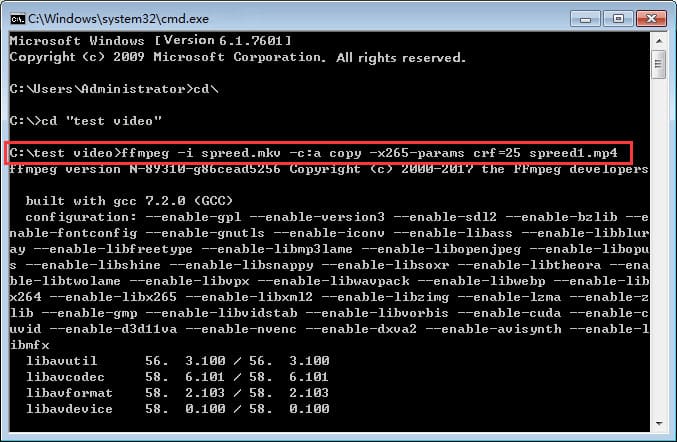
This provides maximum compression efficiency with a single pass. This method allows the encoder to attempt to achieve a certain output quality for the whole file when output file size is of less importance. This is the recommended rate control mode for most uses. CRF stipulates the rate control mode to keep the best quality vs. preset slow = a preset is a collection of options that provides a certain encoding speed to compression ratio Movie.mkv = this is the original source file that you want to convert Iterating through a folder of files to show the video or audio codec information of all the filesįfmpeg -i movie.mkv -c:v libx264 -preset slow -crf 17 -tune film -c:a copy converted-movie.mkv.Using FFMpeg to show the video and audio codec information of a file.Iterating through a folder of video files and converting them as in #1.Using FFMpeg to convert a video file to an H.264 video format while copying the audio as is.
#Ffmpeg windows codec how to#
Okay, the common scenarios I’m going to show you how to work with today include: so to be clear, this is for the Windows DOS command line only! I make no guarantees this will work on other systems.

While I was researching how to do some of these commands, I found a lot of conflicting advice that was for using Linux command lines, etc.

I’ve been playing around with FFMpeg to batch convert some video and audio files and want to share some tricks I’ve learned for both FFMpeg and the Windows DOS command line. Today’s post is off topic from cybersecurity.


 0 kommentar(er)
0 kommentar(er)
